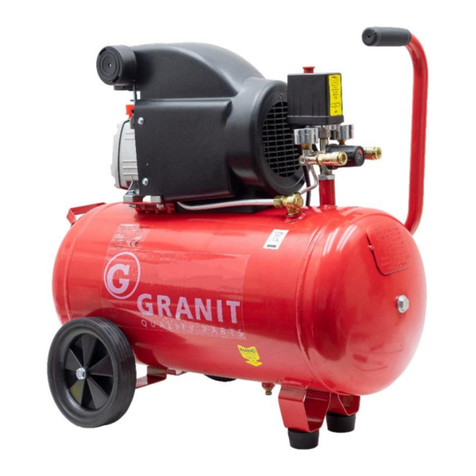Compressor Operating Instructions
61099050
2
Table of contents
1. About these operating instructions and symbol descriptions................................... 3
2. Safety and accident prevention rules .................................................................. 3
3. Performance specifications ................................................................................ 5
3.1. Intended use ................................................................................................ 5
3.2. Technical data .............................................................................................. 5
3.3. Main components .......................................................................................... 6
3.4. Getting the machine ready for operation .......................................................... 6
3.5. Oil level ....................................................................................................... 7
4. Compressor operation....................................................................................... 8
4.1. Preparation for use ........................................................................................ 8
4.2. Using the compressor .................................................................................... 9
4.3. Operating a pressure tank .............................................................................10
4.4. Operation at cold temperatures......................................................................10
4.5. Operating the equipment ..............................................................................11
4.6. Switching off the compressor .........................................................................11
5. Maintenance and care ......................................................................................12
5.1. General maintenance instructions...................................................................12
5.2. Maintenance plan .........................................................................................12
5.3. Cleaning......................................................................................................13
5.4. Cleaning/replacing the air filter ......................................................................13
5.5. Draining condensate .....................................................................................13
5.6. Oil replacement............................................................................................14
5.7. V-belt tension ..............................................................................................14
6. Storage and transport......................................................................................15
7. Disposal .........................................................................................................15
8. Fault rectification ............................................................................................16
9. Component drawing with installation position......................................................17
10. Spare parts and parts list .................................................................................18
11. EG Declaration of Conformity ............................................................................20
12. Warranty........................................................................................................21
13. Addresses ......................................................................................................21
14. Legal notice ....................................................................................................21






























